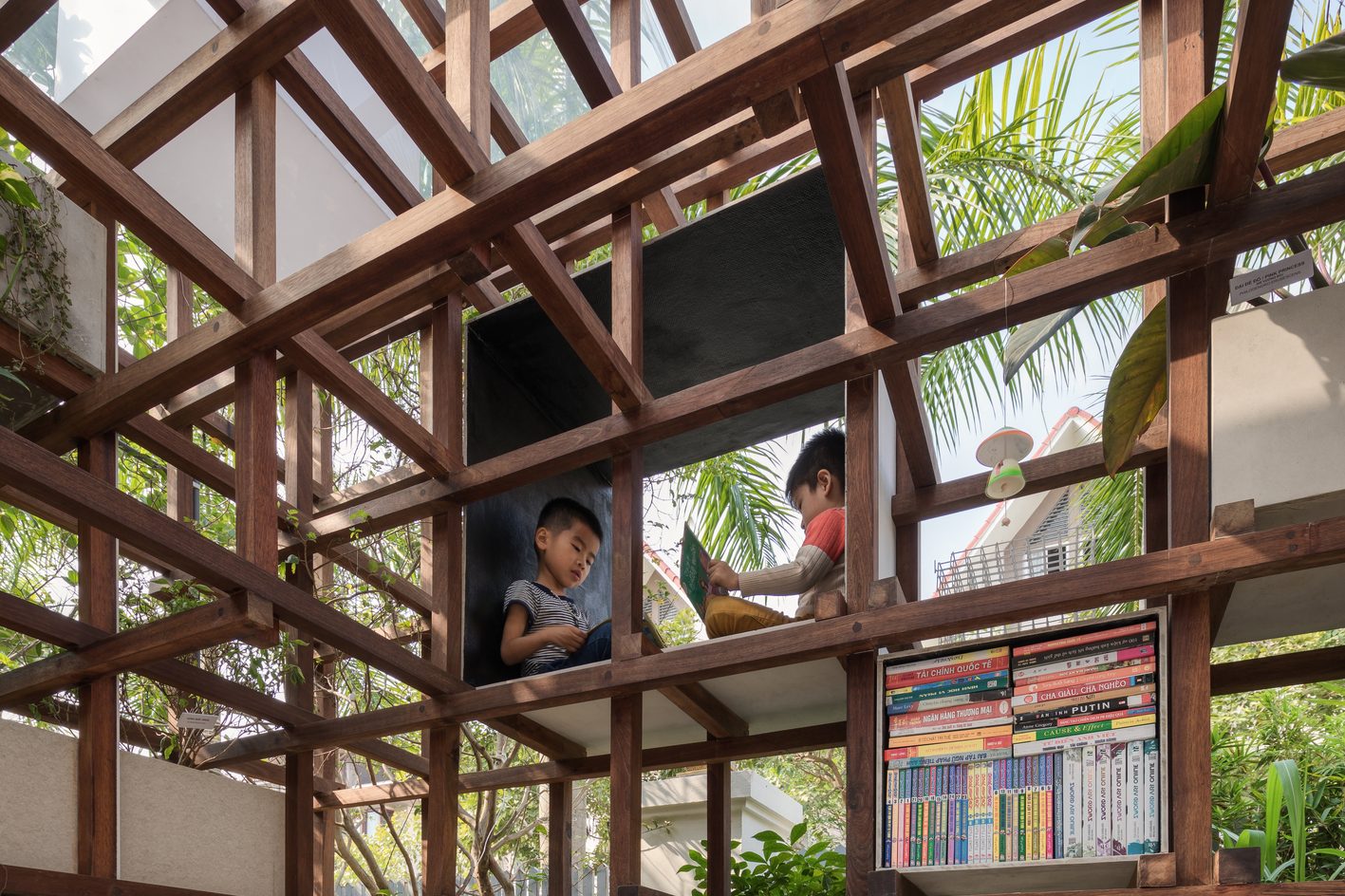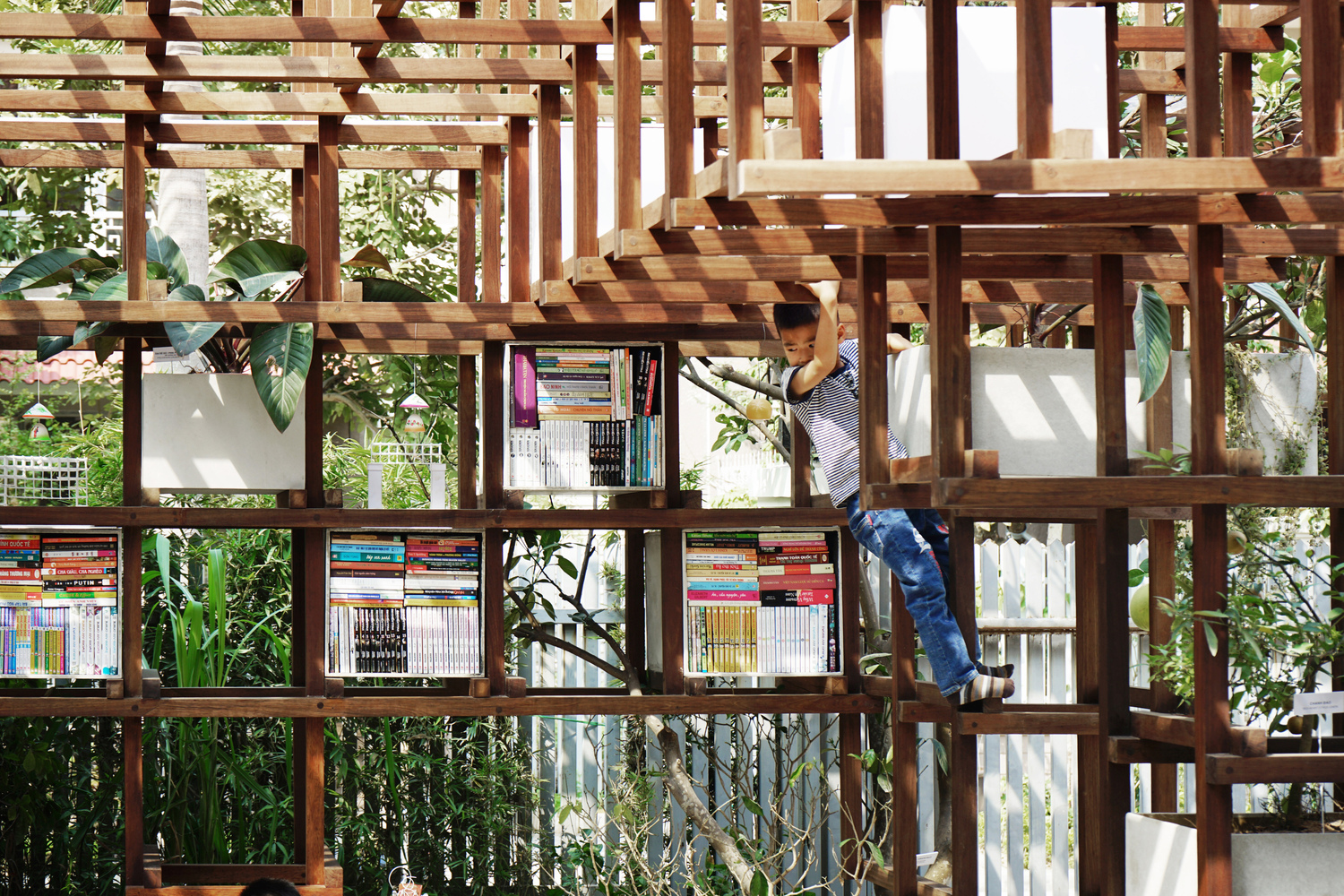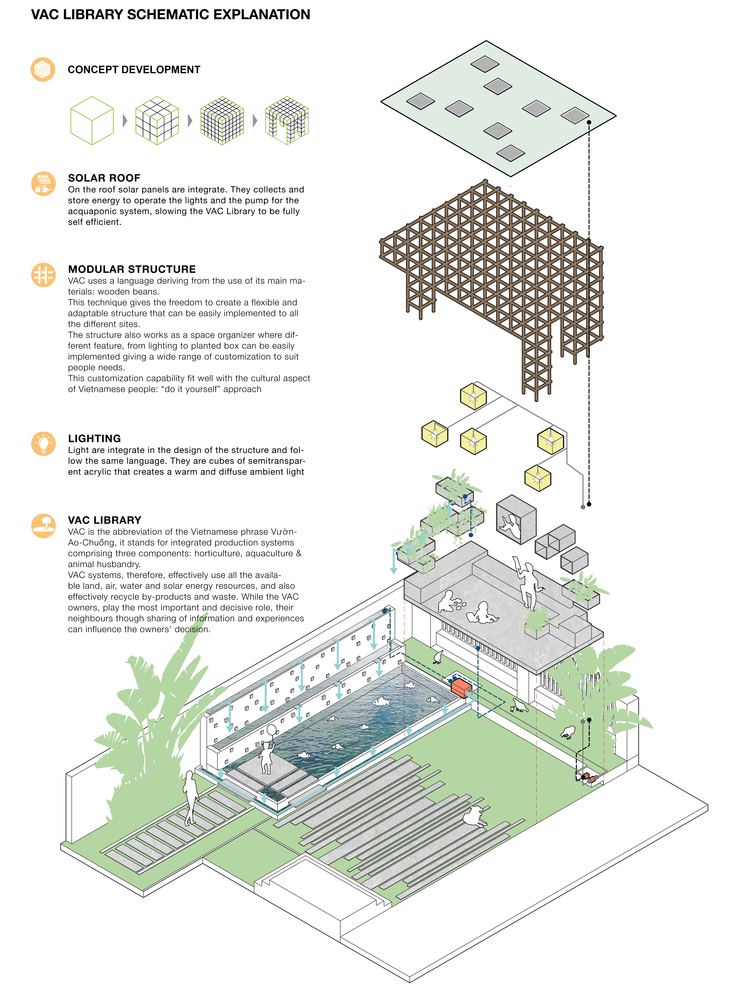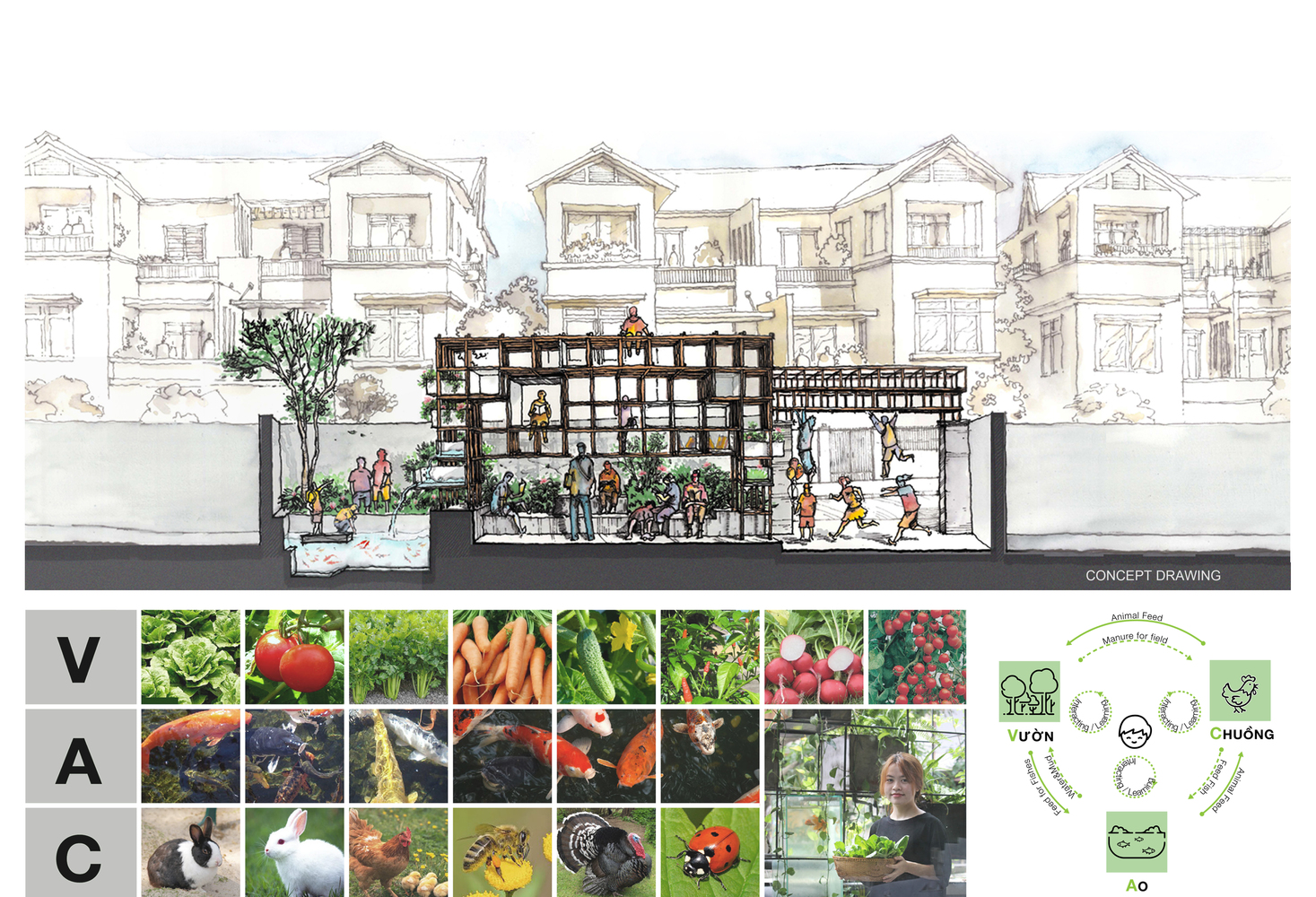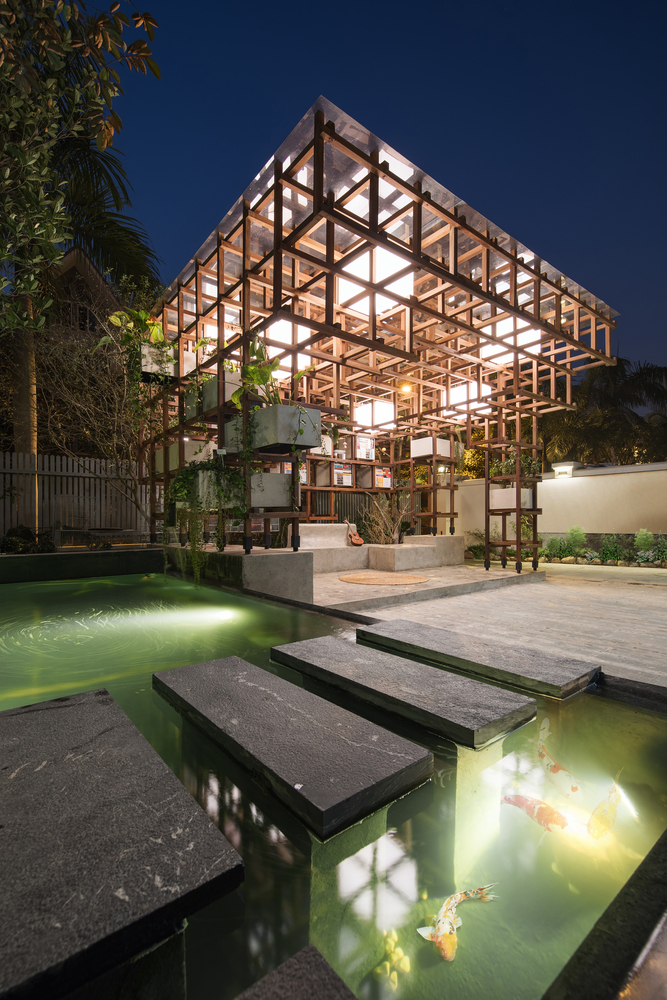FARMING ARCHITECTS, A VIETNAM-BASED ARCHITECTURE FIRM, HAS COME UP WITH AN INTERESTING WAY TO MOTIVATE PEOPLE TO SPEND TIME OUTSIDE OF THEIR HOMES AND ENJOY THE FRESH AIR IN HANOI WITH VAC LIBRARY
TEXT: SUTEE NAKARAKORNKUL
PHOTO: THAI THACH / VIET DUNG AN
While COVID-19 has dominated headlines and people’s conversations over the first half of the year, air pollution is an issue that has been missing from our attention despite its effects on the public health that needs to be seriously discussed and resolved. It wasn’t even too long ago that the people of Bangkok were getting used to a life with a mask on. At the end of last year, PM2.5 levels were skyrocketing within such a short period of time while Chiang Mai’s battle against the toxic fog caused by wildfires became a constant, if not an endless fight.
Looking further at neighboring countries such as Vietnam whose capital city, Hanoi is also going through a similar predicament. It seems as if air pollution problems in Southeast Asian cities, especially those that have seen rapid industrial developments, are becoming normalised. So the question that ensues is: as a designer, what can one do?

Instead of directly discussing the issue, Farming Architects, a Vietnam-based architecture firm, has come up with an interesting way to motivate people to spend time outside of their homes and enjoy the fresh air in Hanoi with VAC Library. This experimental project creates a children’s library within the 55-square meter space, which houses 4 different functional programs of resourceful landscape, a Koi pond, chicken coops and a library (which looks more like a book pavilion). The architect’s intention is to create a simulated Ecosystem for children to learn about the urban coexistence between humans, nature and the sustainable use of natural resources.
The design of the library employs a timber grid structure that enables children to exercise their muscles by physically climbing around the architecture whenever they feel tired of reading. The modular system of the wood structure is designed to be adjustable with flexible forms that can be moved and re-installed in other settings such as schools and public parks. The interior is filled with lighting that illuminates at night and plant pots for the vertical edible garden. Adjacent to the garden are the pond and chicken coops that invite children to spend time observing animals and nature although we aren’t exactly sure how much the children can tolerate the smell of chicken poo while they’re reading.
The programs meaningfully correspond with the name of the project itself with VAC referring to 3 Vietnamese words: Vườn (garden), Ao (pond) and Chuồng (cage). The three elements coexist under the relationship known as dependent integrated farming with Aquaponics being the principle mechanism of this simulated Ecosystem.
Essentially, Aquaponics is a system of resource cycling made possible through a dependent relationship with ‘water’ playing the most vital role. For example, using the water in a fish pond to water vegetable plots would mean that the waste inside the pond digested by nitrate bacteria would become excellent nutrients that helps fertilise the plants. Meanwhile, chickens do not only produce eggs but excrements that can be turned into organic fertiliser (although children’s participation in these processes has not yet been reported). In addition, the idea of recycled energy is demonstrated through the use of electricity generated from solar cell panels installed on the library’s roof used to power the fish ponds pump.
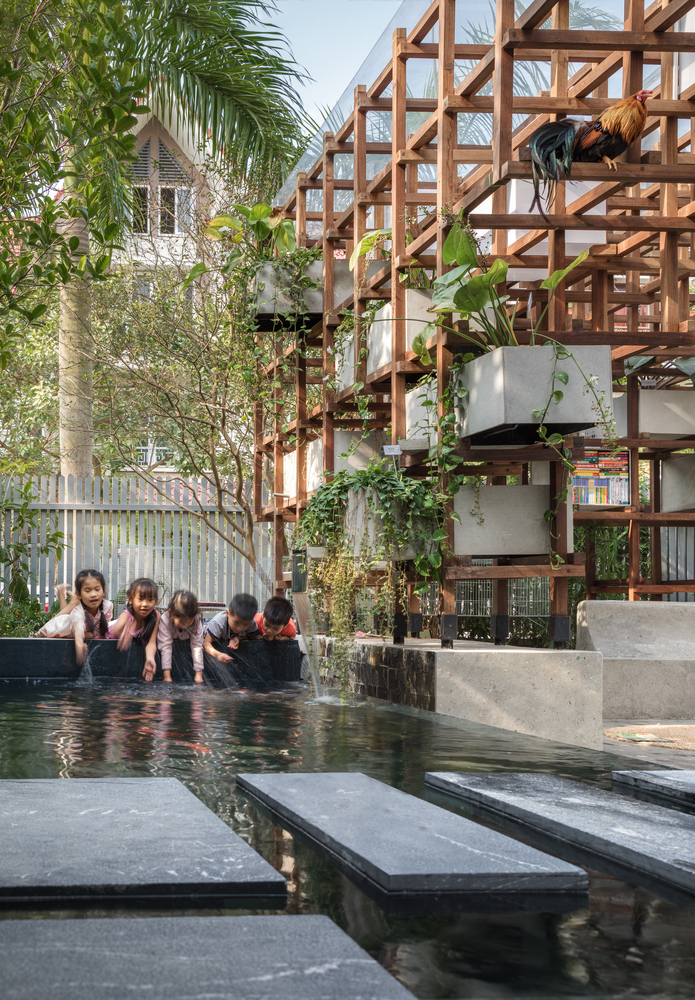
While a question has been raised regarding the structure’s ability to withstand the heat from the sun and protect the functional space from the rain, as well as the comfort it can offer after an extended usage period, this experimental project is an interesting attempt to adapt the rural way of life into a useful hobby for urban inhabitants, not to mention how the program itself helps cultivate and demonstrate the concept of sustainability in a relatable and not so forceful manner. On the note of tangible success, the project has been chosen to be on the list of 100 Greatest Places 2019 by Time Magazine.
VAC Library has been operating for about a year now and we aren’t exactly sure how much this living library has changed. So if you’re nearby or have a chance to stop by Hanoi and want to see the project for yourself, it’s located in An Hung New Urban Area, Duong Noi, Hà Đông.


